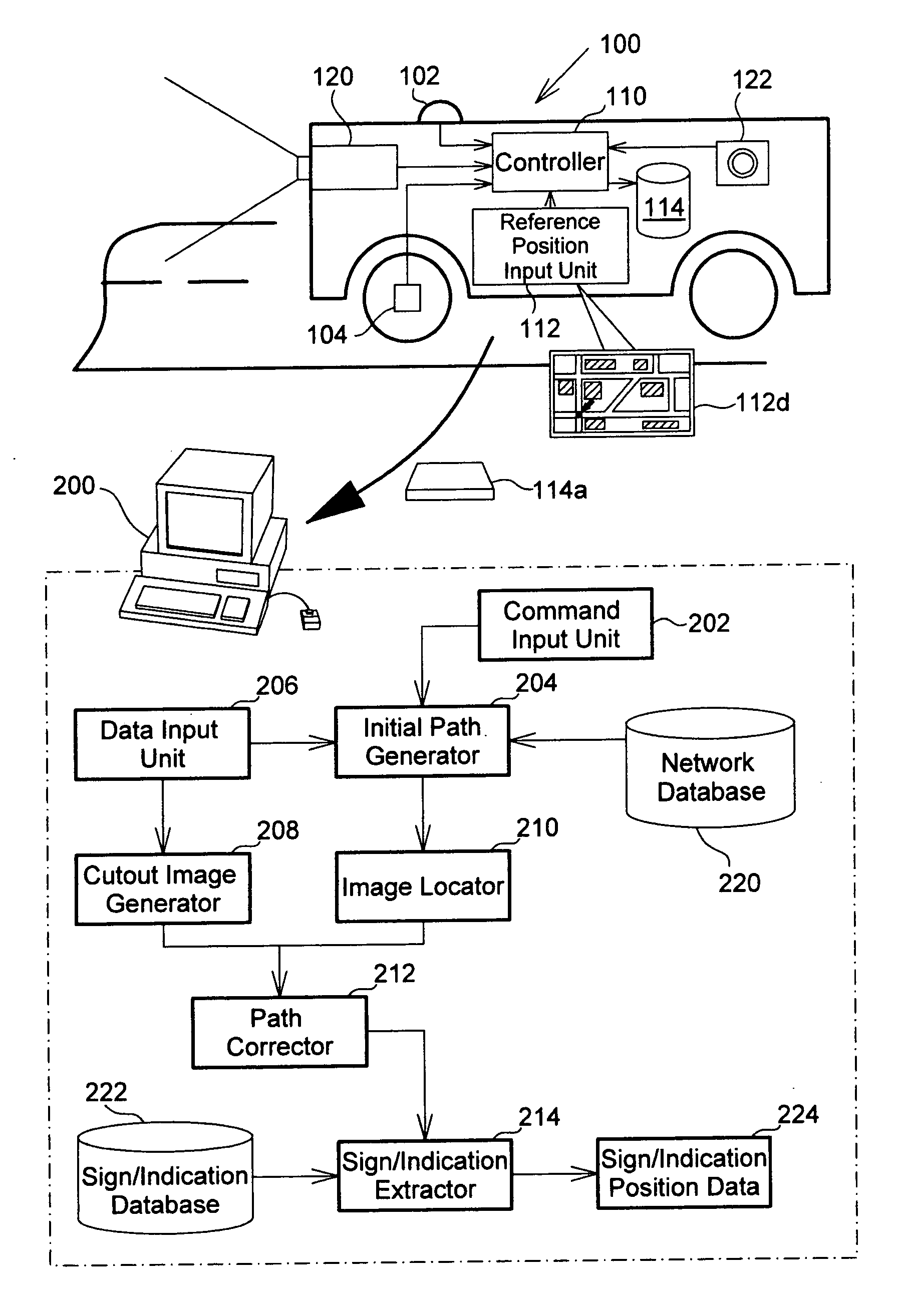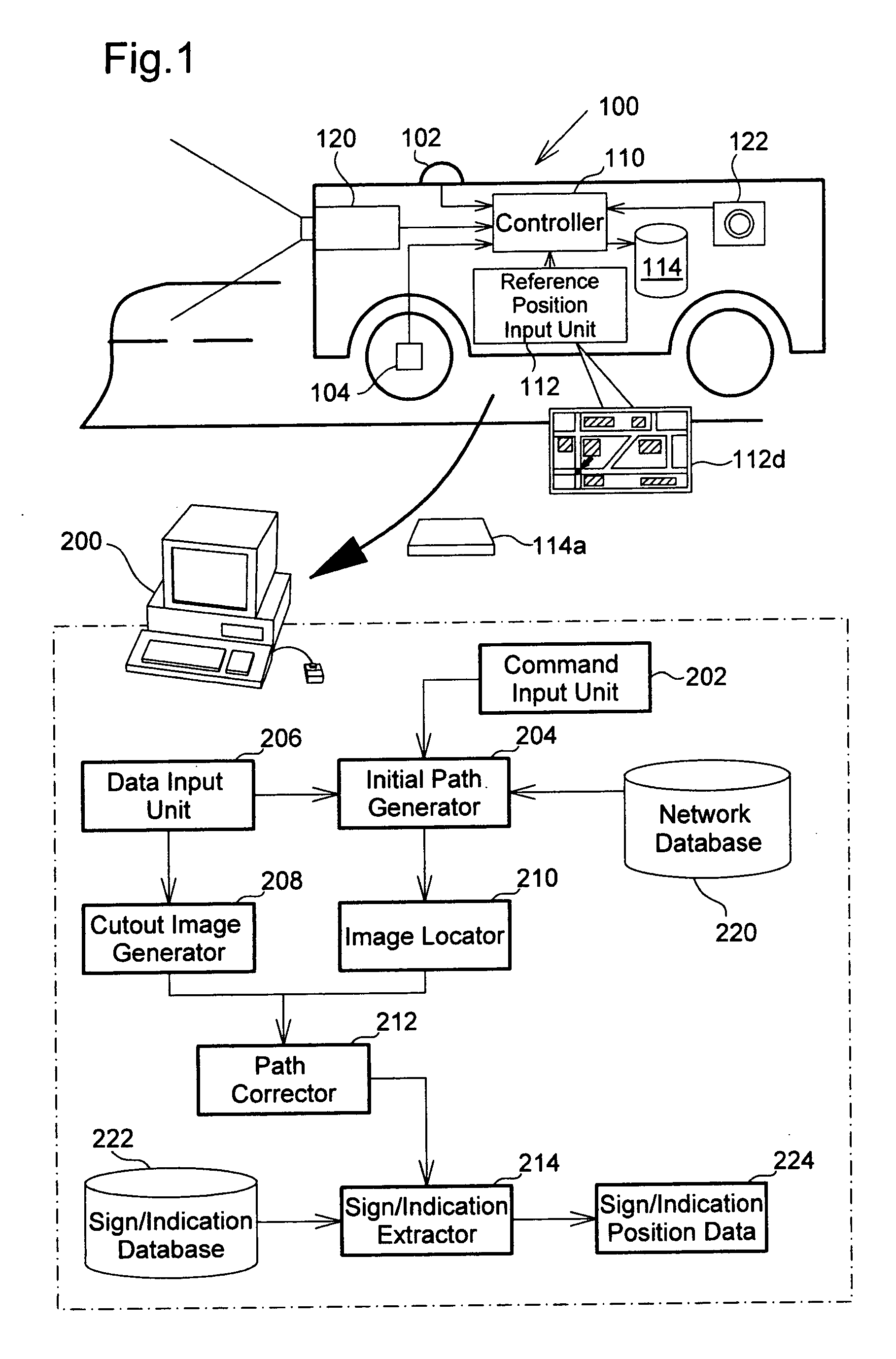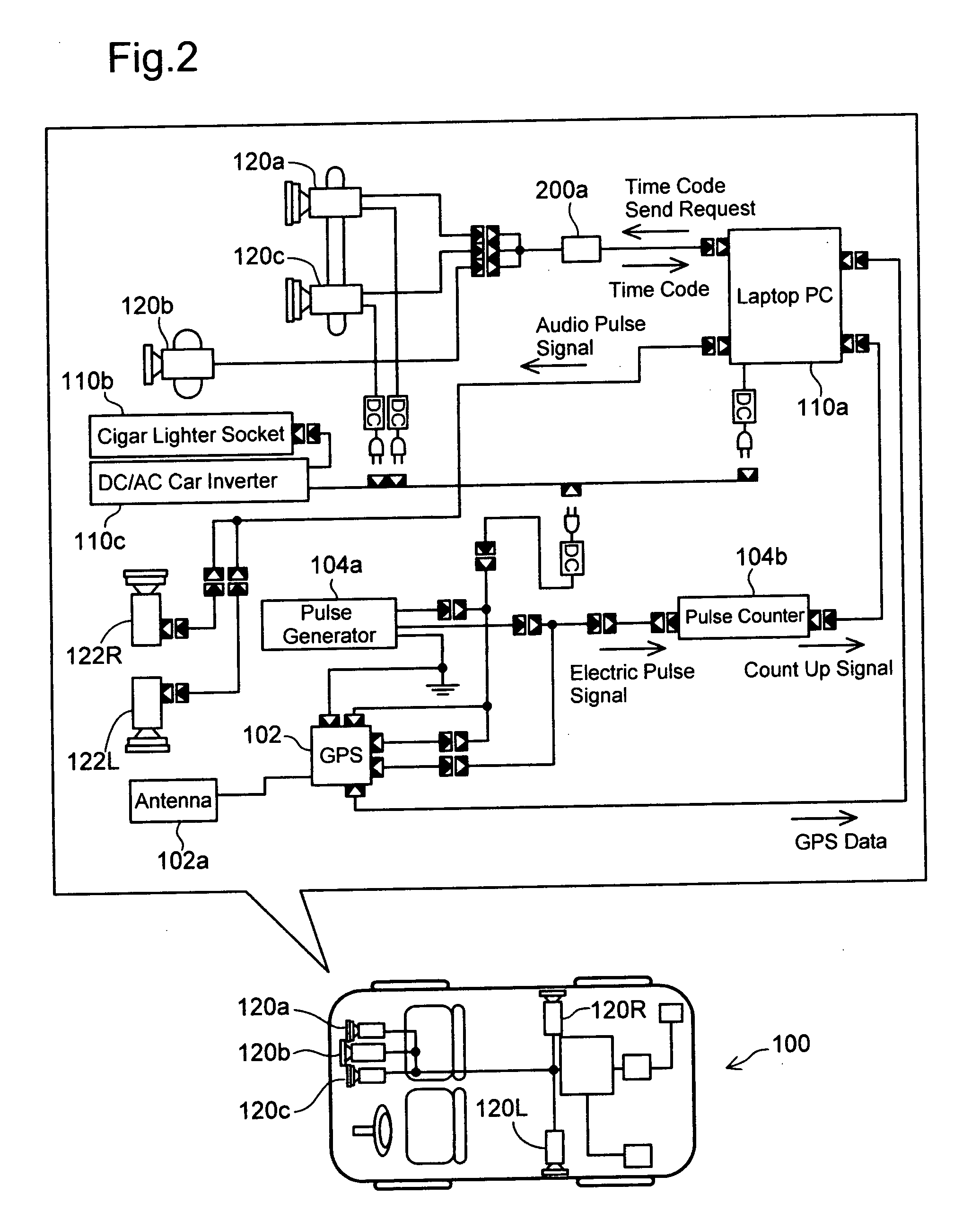Imaging position analyzing method
a position analysis and imaging position technology, applied in the field of imaging position analysis, can solve the problems of insufficient positioning accuracy of the imaging position of the image, insufficient accuracy for various analyses based on image data, and insufficient consideration of positioning accuracy, so as to improve the positioning accuracy of the imaging position, improve the positioning accuracy, and improve the effect of positioning accuracy
- Summary
- Abstract
- Description
- Claims
- Application Information
AI Technical Summary
Benefits of technology
Problems solved by technology
Method used
Image
Examples
Embodiment Construction
[0026]Some modes of carrying out the invention are described below in the following sequence:
[0027]A. System Configuration
[0028]B. Data Structure
[0029]C. Principle of Imaging Position Analysis[0030]C-1. Initial Path[0031]C-2. Feature Point Tracking Process
[0032]D. Imaging Position Analyzing Process
[0033]E. Sign / Indication Extraction Process
[0034]F. Concrete Examples
[0035]G1. Modified Example: Arrangement of Frame Data
[0036]G2. Modified Example: Utilization of Side Image
[0037]G3. Modified Example: Detection of Time Change
[0038]G4. Modified Example: Analysis of Guide Plate Position Coordinates
A. SYSTEM CONFIGURATION
[0039]FIG. 1 schematically illustrates the configuration of an image data processing system in one embodiment of the invention. The image data processing system processes a moving image captured by a traveling vehicle on the road. The series of processing performed by the image data processing system includes an imaging position analyzing process that analyzes and specifies...
PUM
 Login to View More
Login to View More Abstract
Description
Claims
Application Information
 Login to View More
Login to View More - R&D
- Intellectual Property
- Life Sciences
- Materials
- Tech Scout
- Unparalleled Data Quality
- Higher Quality Content
- 60% Fewer Hallucinations
Browse by: Latest US Patents, China's latest patents, Technical Efficacy Thesaurus, Application Domain, Technology Topic, Popular Technical Reports.
© 2025 PatSnap. All rights reserved.Legal|Privacy policy|Modern Slavery Act Transparency Statement|Sitemap|About US| Contact US: help@patsnap.com



